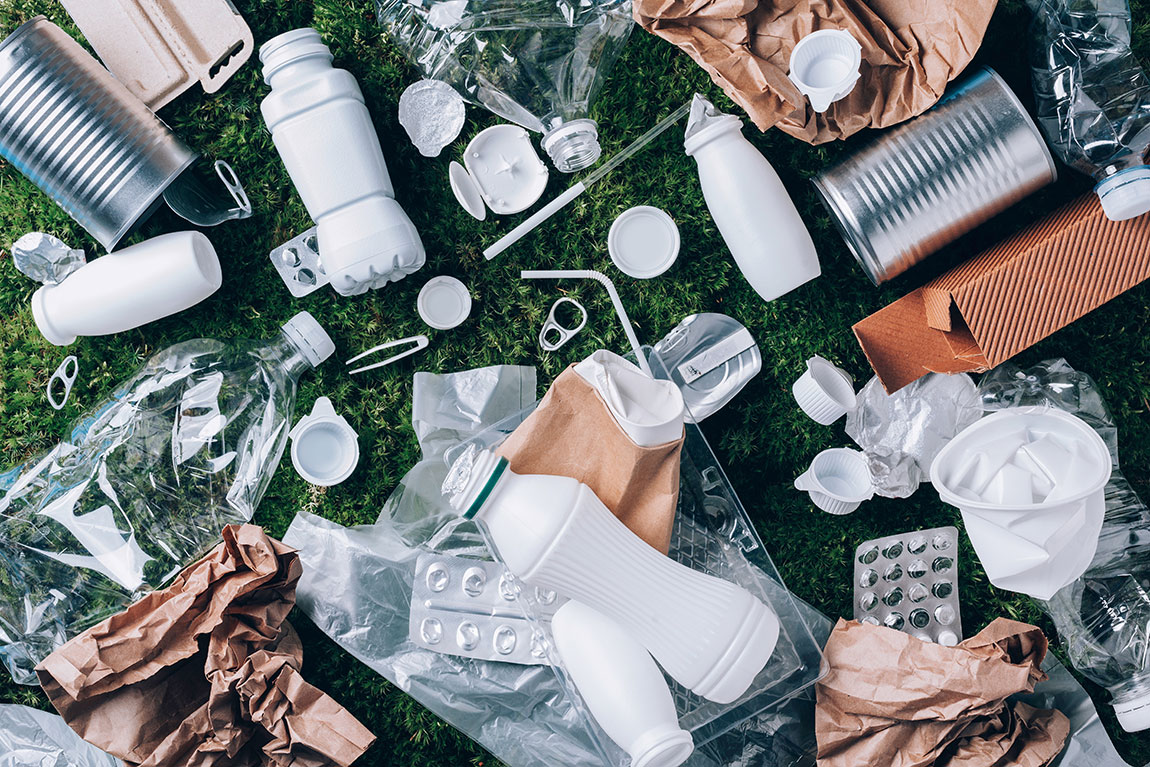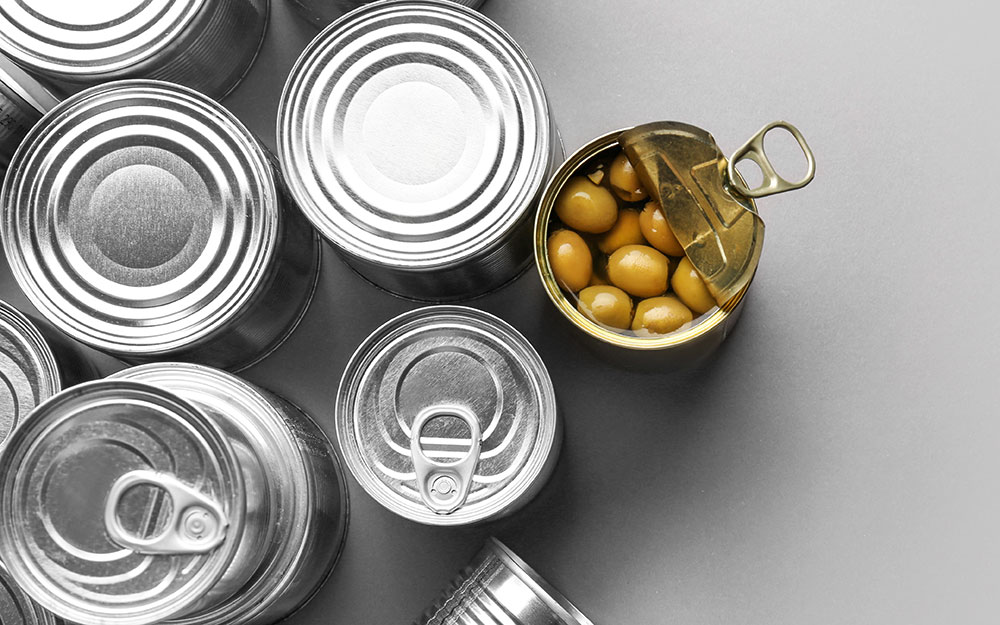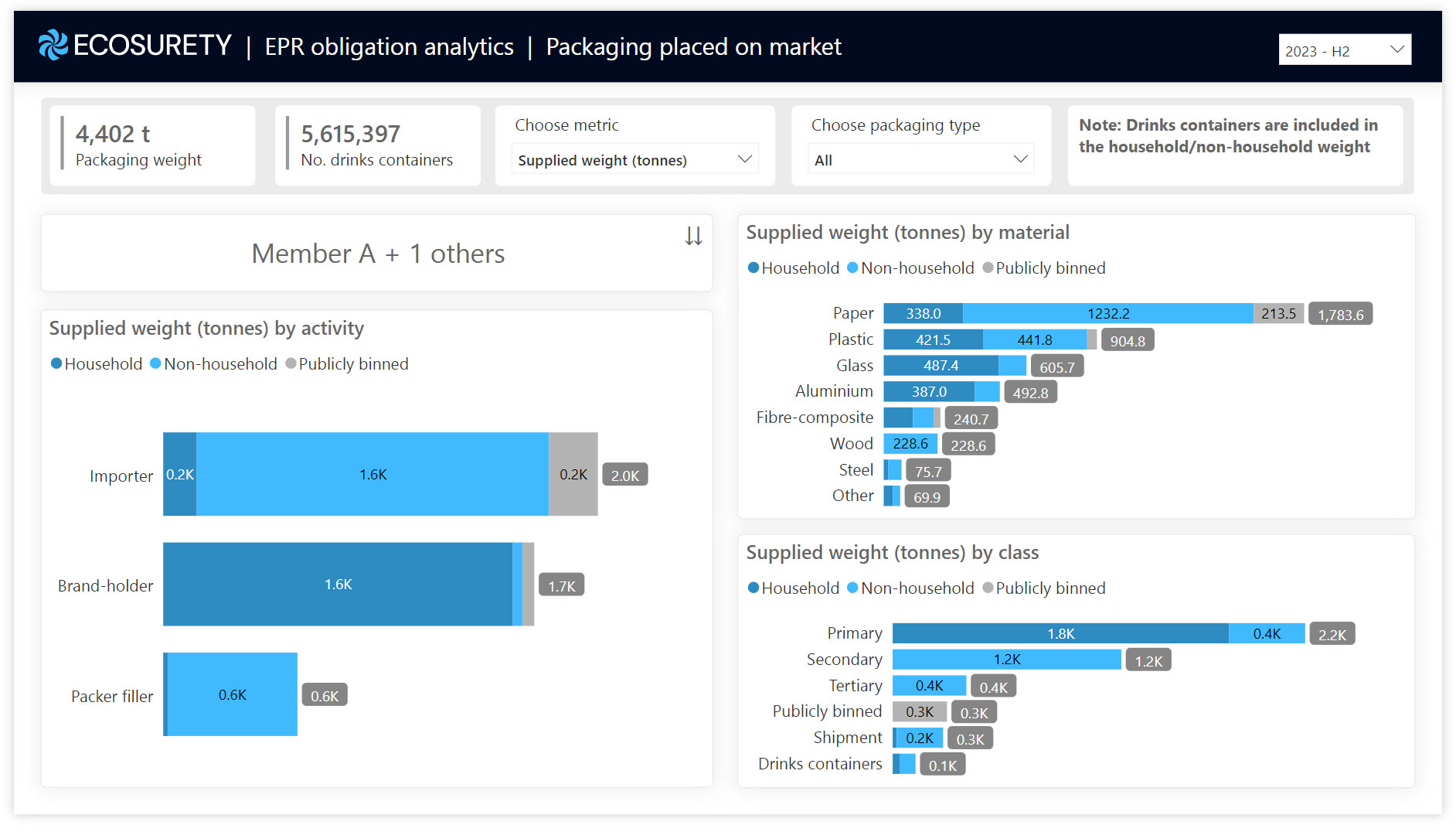Introduction
Packaging EPR brings increased costs for many producers due to the single point of compliance and new waste management fees from 2025. The fees are due to be modulated to incentivise the use of packaging materials that have a lower environmental impact. Find out below what we know so far, what to expect and how you can prepare now.
Who is impacted?
Large organisations that supply or import packaging that is identified as likely to end up as household waste or commonly ending up in public bins, must pay a waste management fee to the scheme administrator from October 2025, in addition to their PRN obligation. The money raised from the waste management fees will be distributed to local authorities via the scheme administrator and is intended to cover the cost of collecting and sorting packaging waste from households and public bins. This is in addition to the PRN obligation large producers must also pay that directly funds the recycling of the material with recyclers.
Important to know
Waste management fees were due to start in 2024, but on 25 July 2023 government confirmed that the fees will be delayed by a year and will not start until October 2025. This announcement came "following extensive engagement with industry and in light of the pressure facing consumers and businesses in the current economic context”. Government also stated that “the additional year will be used to continue discussions on the scheme’s design with industry and reduce the costs of implementation wherever possible.” As such, large producers will only have a PRN obligation before this date, but you must report your EPR data as normal from 2023.
During the first year of fees (in 2025/26 relating to the reporting year 2024) a flat fee per material will be applied for the waste management fees. These will not be modulated by recyclability but will reflect the average handling and recycling costs of the material types, termed ‘base fees’.
From the second year (2026/27) however, the fees will be modulated to incentivise producers to use materials that are more easily recyclable – with the potential for other environmental factors to be included in the future. Defra have released a list of packaging types that may be the first formats to be modulated, listed below.
More easily recyclable packaging will attract a proportionally lower fee per tonne compared to materials that are less recyclable. The fee modulation will vary within the main material categories, for example with different types of plastic attracting different fees.
Defra have stated their vision, that by 2030 the packaging supply chain will be optimised to maximise recycling rates and material quality, minimising environmental impact.
How will fee modulation be calculated?
The fee modulation will be calculated using a simple formula:
Material base fee X Modulation factor = Modulated fee
The material base fee will apply to the broader material category, for example, plastic. The base fees will be published in 2024. In the first year of fees, only the base fee will make up the waste management fee invoiced to producers. Government have now released illustrative base fees, explained in our article Understand your packaging EPR costs.
The modulation factor meanwhile will be determined per material type within the broader material category, for example, PVC or PET plastic. The modulation factors are expected to be published in 2024, allowing producers to prepare. The modulation factor will only be applied to fees invoiced from the 2026/27 financial year. Although there will be no financial obligation attached to EPR data reported in 2023, the data will be used to provide illustrative base fees for 2025.
A modulation factor of less than 1 will be used to reduce the base fee and incentivise a more easily recyclable material type, whilst a modulation fee greater than 1 will be used to increase the base fee and disincentivise a harder-to-recycle material type. In this way, the fee could be doubled or halved, for example, depending on the material recyclability.
Packaging recyclability may also be assessed on format. For instance, multiple-material composite packaging may attract higher fees as it is not as easily recycled as mono-material packaging.
Recyclability Assessment Methodology
A ‘Recyclability Assessment Methodology (RAM) is currently being developed and will inform fee modulation.
The first version of the RAM was released in October 2024. The methodology has been drafted ahead of mandatory use by producers to inform the EPR fee modulation for recyclability beginning in 2026.
It has not been confirmed yet exactly when registered producers under EPR will be required to input their packaging formats into the RAM, but further data and detailed information will need to be collected ahead of mandatory use. For instance, producers will likely be asked about UK collection and sortation infrastructure available for their packaging types, and the use of any recycling inhibitor such as certain inks or chemicals.
Packaging placed on the market in 2025 will be modulated via the RAM with waste management fees being attributed to it after April 2026, so we can expect further guidance and information on timelines soon, alongside the finalised methodology.
Important to know
It is the intention that packaging reported as publicly binned in all four nations, and additionally packaging that is commonly littered in Wales and Scotland, will be charged an additional fee. This provision is not in the current draft EPR regulations, it will be bought in at a later data via an amending statutory instrument.
Important to know
Online marketplaces will likely not be subject to fee modulation once the EPR waste management fees start being charged. However, the scheme administrator may implement fee modulation for this packaging in the future.
What should I do now?
The key to optimising your packaging to reduce your EPR costs starts with making sure the data about your packaging is accurate, thorough, and properly managed. This will enable you to identify which products you should prioritise to improve the packaging.
In terms of identifying what materials you should be using to reduce your environmental impact and EPR fees, it will become relatively straightforward once the fee modulation is published. This will allow you to cross-check against your packaging portfolio to identify the packaging to improve. In the meantime, the list of materials above that Defra has shared as 'being considered for higher fees' gives an indication now of what you may want to move away from - just bear in mind that they are not confirmed yet.
We recommend joining OPRL if you have not already as their labelling scheme will also give you a good indication of material recyclability. The mandatory labelling requirement has been delayed and is not yet set in legislation, but government have stated their commitment to ensuring a unified packaging labelling system for the UK under EPR regulations in the future. They are working with an external consultancy to develop a Recycling Assessment Methodology to ensure producers label their packaging correctly.
Our data team can of course help with this analysis too, simply speak to your account manager to find out more.
Next steps
We recommend that you fully Understand your packaging EPR costs.
External resources
Read the official packaging EPR data guidance on gov.uk
Read more about the illustrative base fees on gov.uk
Page updates
05 November 2024 - We added a new section on the Recyclability Assessment Methodology, which is currently being developed and will inform fee modulation.
3 October 2024 - We updated the 'What should I do now section?' to explain that the mandatory labelling requirement no longer has an implementation date.
21 August 2024 - We updated dates throughout the article of when fees will apply due to confirmation by government.
16 May 2024 - We added new information to the 'What materials will attract higher fees?' section to explain that packaging reported as publicly binned will attract a higher fee and that online marketplaces will not be subject to fee modulation, when the fees start.
4 April 2024 - We updated the 'Who is impacted section?' to clarify that Defra have released a list of packaging types that may be the first formats to be modulated, listed in this article in the 'What materials will attract higher fees?' section.

Ben Luger
Marketing Project Specialist
Ben helps drive marketing communications and projects for Ecosurety, including project managing the launch of the Ecosurety Exploration Fund and website content development.



